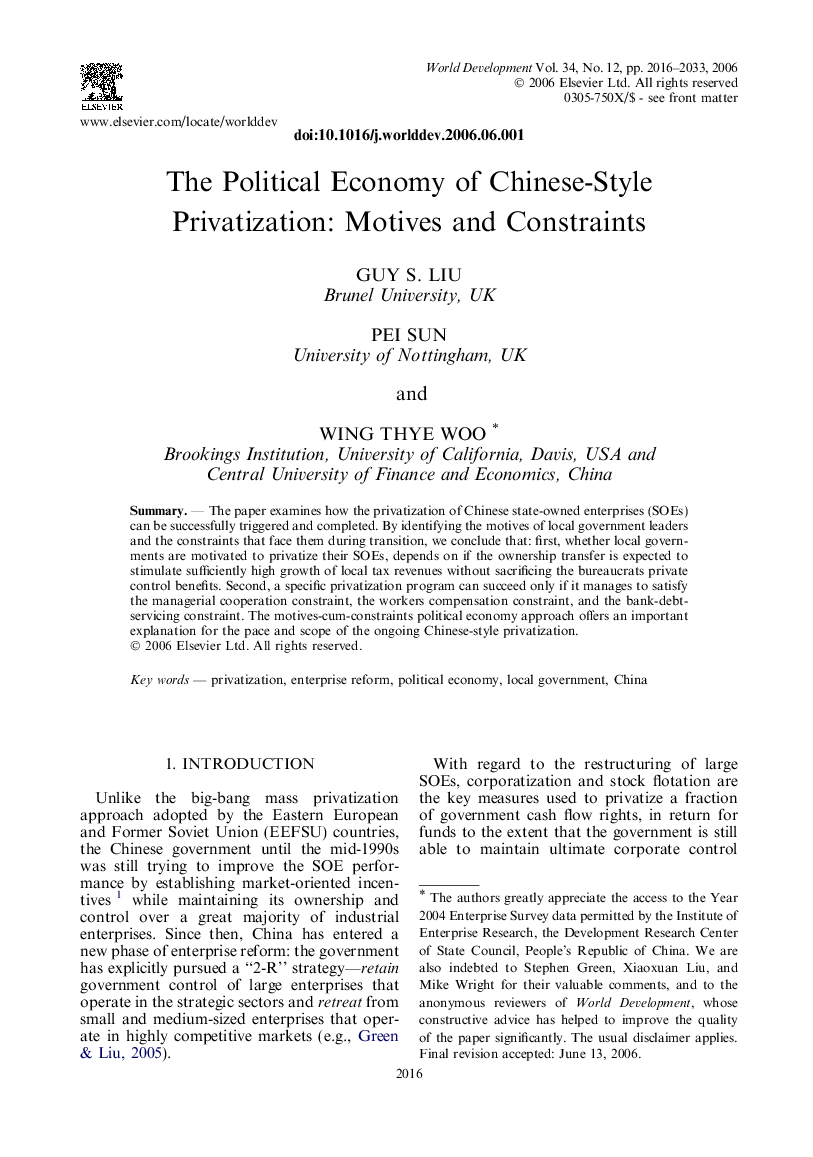| Article ID | Journal | Published Year | Pages | File Type |
|---|---|---|---|---|
| 992552 | World Development | 2016 | 18 Pages |
SummaryThe paper examines how the privatization of Chinese state-owned enterprises (SOEs) can be successfully triggered and completed. By identifying the motives of local government leaders and the constraints that face them during transition, we conclude that: first, whether local governments are motivated to privatize their SOEs, depends on if the ownership transfer is expected to stimulate sufficiently high growth of local tax revenues without sacrificing the bureaucrats private control benefits. Second, a specific privatization program can succeed only if it manages to satisfy the managerial cooperation constraint, the workers compensation constraint, and the bank-debt-servicing constraint. The motives-cum-constraints political economy approach offers an important explanation for the pace and scope of the ongoing Chinese-style privatization.
